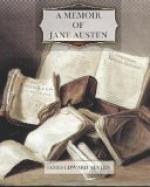It may be observed that this hand-spinning is the most primitive of female accomplishments, and can be traced back to the earliest times. Ballad poetry and fairy tales are full of allusions to it. The term ‘spinster’ still testifies to its having been the ordinary employment of the English young woman. It was the labour assigned to the ejected nuns by the rough earl who said, ‘Go spin, ye jades, go spin.’ It was the employment at which Roman matrons and Grecian princesses presided amongst their handmaids. Heathen mythology celebrated it in the three Fates spinning and measuring out the thread of human life. Holy Scripture honours it in those ‘wise-hearted women’ who ’did spin with their hands, and brought that which they had spun’ for the construction of the Tabernacle in the wilderness: and an old English proverb carries it still farther back to the time ‘when Adam delved and Eve span.’ But, at last, this time-honoured domestic manufacture is quite extinct amongst us—crushed by the power of steam, overborne by a countless host of spinning jennies, and I can only just remember some of its last struggles for existence in the Steventon cottages.
CHAPTER III.
Early Compositions—Friends at Ashe—A very old Letter—Lines on the Death of Mrs. Lefroy—Observations on Jane Austen’s Letter-writing—Letters.
I know little of Jane Austen’s childhood. Her mother followed a custom, not unusual in those days, though it seems strange to us, of putting out her babies to be nursed in a cottage in the village. The infant was daily visited by one or both of its parents, and frequently brought to them at the parsonage, but the cottage was its home, and must have remained so till it was old enough to run about and talk; for I know that one of them, in after life, used to speak of his foster mother as ‘Movie,’ the name by which he had called her in his infancy. It may be that the contrast between the parsonage house and the best class of cottages was not quite so extreme then as it would be now, that the one was somewhat less luxurious, and the other less squalid. It would certainly seem from the results that it was a wholesome and invigorating system, for the children were all strong and healthy. Jane was probably treated like the rest in this respect. In childhood every available opportunity of instruction was made use of. According to the ideas of the time,




